Key takeaways
- Effective Glacier photography requires patience and respect for changing natural light, enhancing the emotional narrative of each shot.
- Essential gear includes a sturdy tripod, appropriate lenses, and a polarizing filter to capture vibrant colors and details.
- Planning is crucial, considering timing and flexibility to embrace unexpected moments during the photographic journey.
- Editing should enhance natural beauty without oversaturation, focusing on conveying the story and mood of the scene.
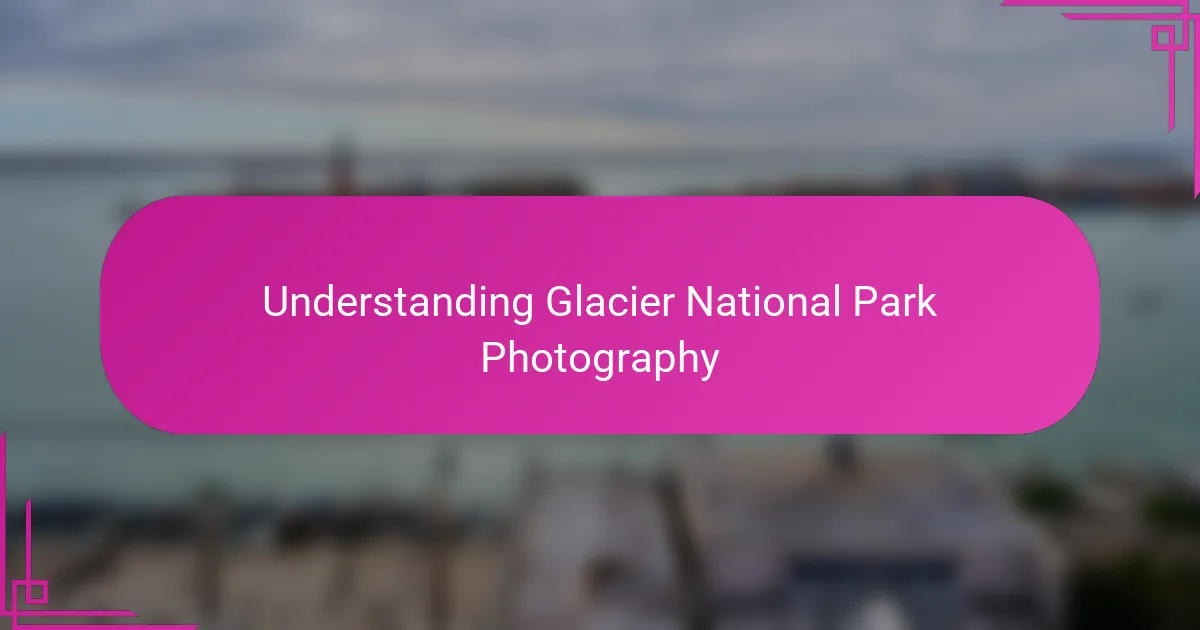
Understanding Glacier National Park Photography
Capturing Glacier National Park’s essence goes beyond snapping landscapes; it’s about feeling the raw power of nature in every frame. Have you ever stood before a glacier, awestruck by its slow, relentless movement? That moment shaped how I approach photography here—seeking not just beauty but the story behind it.
The light in Glacier is something I’ve learned to respect deeply. Morning mists wrapping the peaks or the golden glow filtering through pine trees create moods that change by the minute. Being patient and ready for these fleeting moments makes all the difference in my shots.
What fascinates me most is the park’s diversity—from rugged mountains to serene lakes. Understanding how to frame these contrasts, whether through wide panoramas or close-up details, helps me convey the park’s unique character. Have you tried shifting perspectives to reveal hidden gems that aren’t obvious at first glance?
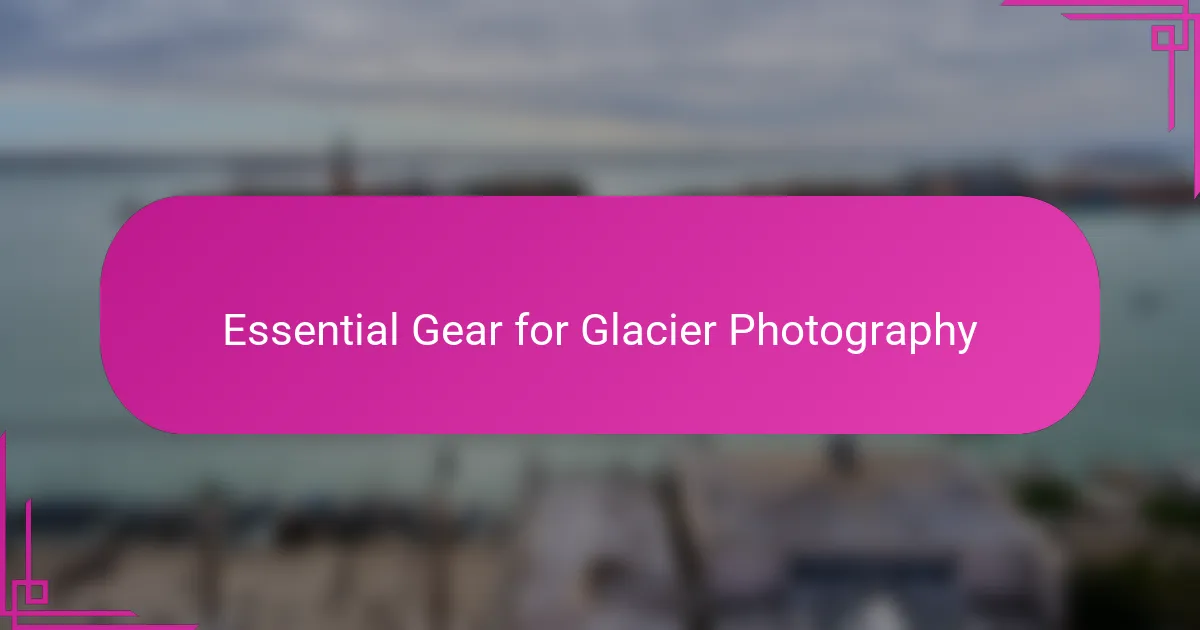
Essential Gear for Glacier Photography
When I first walked Glacier’s trails with my camera, I learned quickly that a sturdy tripod is non-negotiable. The light changes fast, and those long exposure shots of shimmering lakes or drifting clouds need absolute steadiness. Have you ever tried capturing silky water with a shaky hand? It’s frustrating, and that tripod became my best companion.
Choosing the right lens felt like picking a storytelling tool. I rely heavily on a wide-angle lens to embrace the vastness of glaciers and towering peaks. But sometimes, switching to a telephoto lets me focus on intricate ice textures or distant wildlife, bringing stories into sharp focus that the [censured] eye might miss.
One piece of gear I never leave behind is a polarizing filter. Early on, I underestimated how much glare and reflections could dull Glacier’s vibrant colors. Using that filter transformed my images, revealing richer blues and deeper contrasts. It’s like finding a magical window that clarifies what your eyes struggle to see fully. Have you tried it on your next adventure?

Planning Your Photo Trip
Planning a photo trip to Glacier National Park starts long before you hit the trail. I always map out the key spots I want to visit based on the time of day, since the light can completely change the scene. Have you noticed how a sunrise shot at Lake McDonald can feel totally different from the same place at sunset? Timing is everything.
Packing smart is another part of the puzzle. I make a checklist that balances my passion for capturing beauty with practical needs—layers to stay warm, snacks to keep energy up, and extra batteries because cold weather drains them fast. It’s these small details that keep me focused on the shot, rather than scrambling to fix avoidable problems.
Lastly, I can’t stress enough the value of flexibility in your itinerary. When a sudden fog rolls in or a deer unexpectedly crosses the frame, being ready to pivot makes all the difference. Do you plan every minute, or do you leave room for the park’s surprises? From my experience, some of the best photos come from unplanned moments.

Best Lighting Conditions and Times
The soft light of early morning in Glacier National Park has always been my favorite. There’s this quiet magic just before the sun fully rises, when the glaciers and peaks catch a gentle glow that feels almost otherworldly. Have you ever stood there, camera ready, breathing in the crisp air as that first light slowly unfolds? That moment is pure gold for capturing mood and detail.
Afternoon light, while harsher, offers a different kind of beauty. I’ve found that waiting for the sun to dip behind a ridge can turn a bright, flat scene into one filled with dramatic shadows and highlights. It’s like the landscape suddenly starts to tell a story through contrast—something I didn’t appreciate until I got my hands dirty with different shooting times.
Sunset and the so-called “golden hour” are game changers. The warm tones soften the ruggedness of the park’s features and add depth to the textures of the ice and rock. I remember one evening at Avalanche Lake, when the fading light kissed the water and surrounding pines—those were the moments I felt truly connected, capturing not just an image, but a feeling I carry with me. Have you chased that perfect light that makes the whole scene come alive?
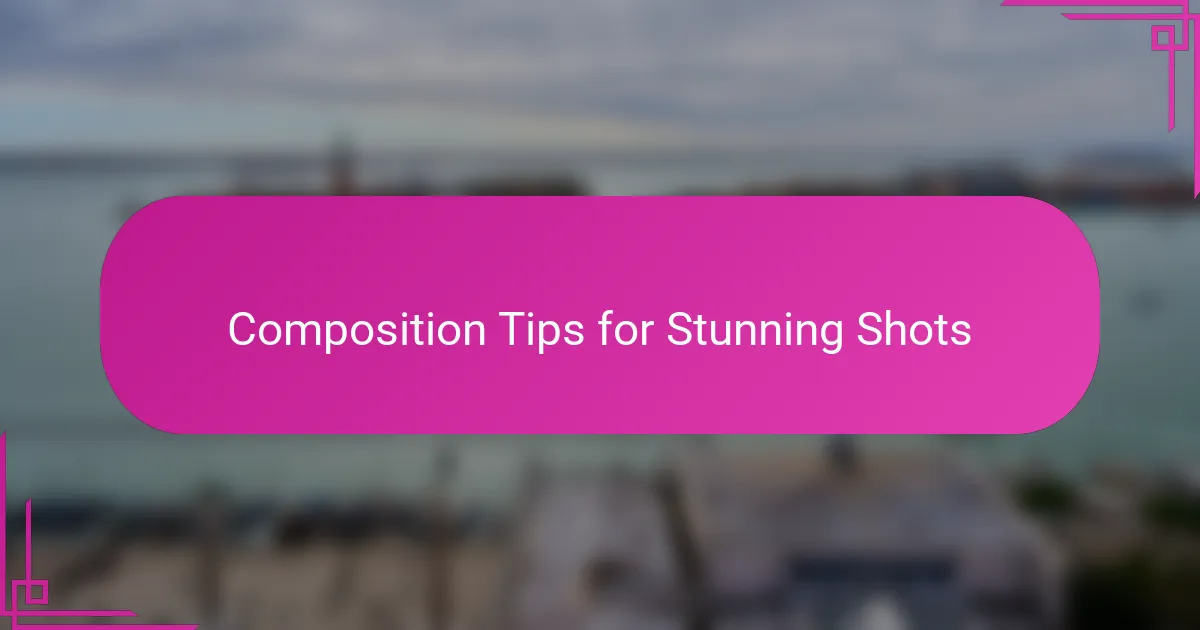
Composition Tips for Stunning Shots
Finding balance in your frame changed everything for me. I used to cram too many elements into one shot, hoping to capture it all. But Glacier’s beauty is best told through simplicity—sometimes just a lone tree against a vast glacier tells a more powerful story than a thousand details. Have you ever felt that less truly is more when composing your shot?
Leading lines became my secret weapon. Trails, rivers, or the edges of glaciers naturally draw the eye into the photo, creating a journey within the frame. One morning, I followed a winding stream that led straight to a towering peak, and that image still feels like a path inviting you into the heart of the park. What natural guides have you discovered that pull you deeper into a scene?
I also learned to embrace foreground interest. Placing wildflowers or textured rocks close to the lens added depth and made the expansive landscapes feel more immersive. That moment taught me that composition is about connection—linking the small with the grand to capture Glacier’s full spirit. Have you tried changing your focus from just the distant horizon to what’s right at your feet?
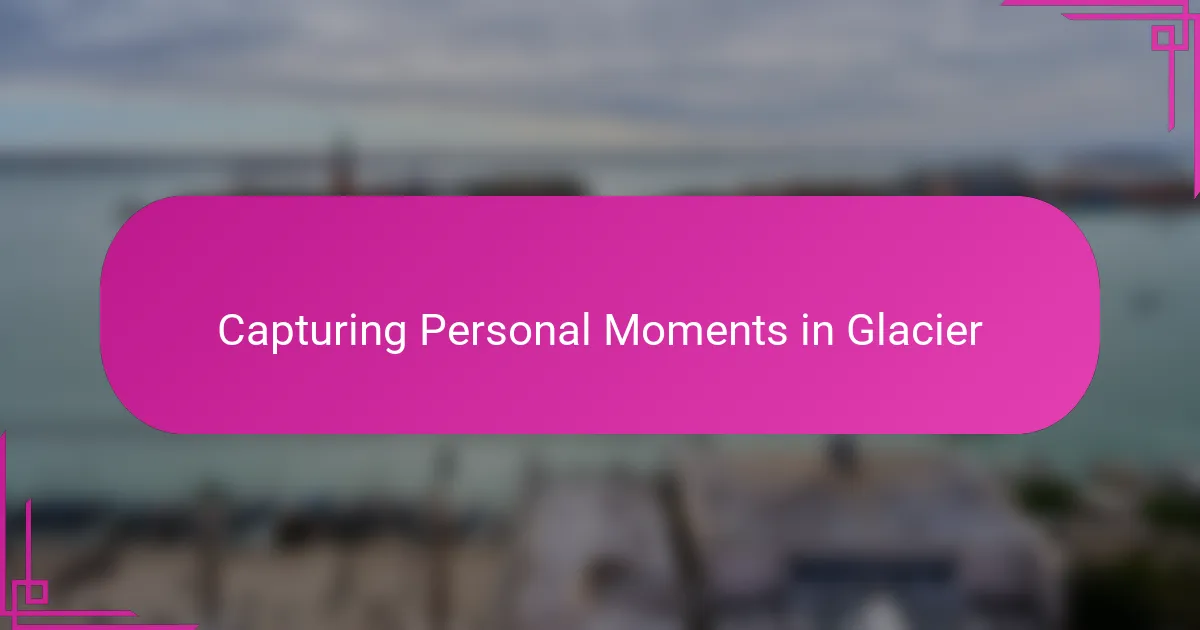
Capturing Personal Moments in Glacier
What truly makes photographing Glacier National Park special to me are the personal moments tucked between the grand vistas. I recall sitting quietly by a remote alpine lake, my breath visible in the chilly air, as a family of ducks glided serenely past—capturing that simple scene reminded me that nature’s intimacy can be just as powerful as its vastness. Have you ever found yourself pausing, camera in hand, simply to witness the subtle interactions that make a place feel alive?
Sometimes, the best photos come not from planned shots but from spontaneous encounters. I’ve had moments where the soft laughter of friends echoing through the pines or the shared awe at a sudden wildlife sighting added layers of meaning to my images. These personal touches give my Glacier photos a narrative beyond scenery. How often do you think your own emotional connection shapes the stories your photos tell?
To me, capturing personal moments in Glacier means embracing vulnerability—letting down the photographer’s guard and inviting viewers into the experience rather than just the view. It’s in those quiet, unguarded instants—the fog rolling in slowly or the warm glow on a loved one’s face amid the cold—that I feel I’ve truly documented the park’s spirit. Have you noticed how these moments stick with you long after you’ve packed away your gear?
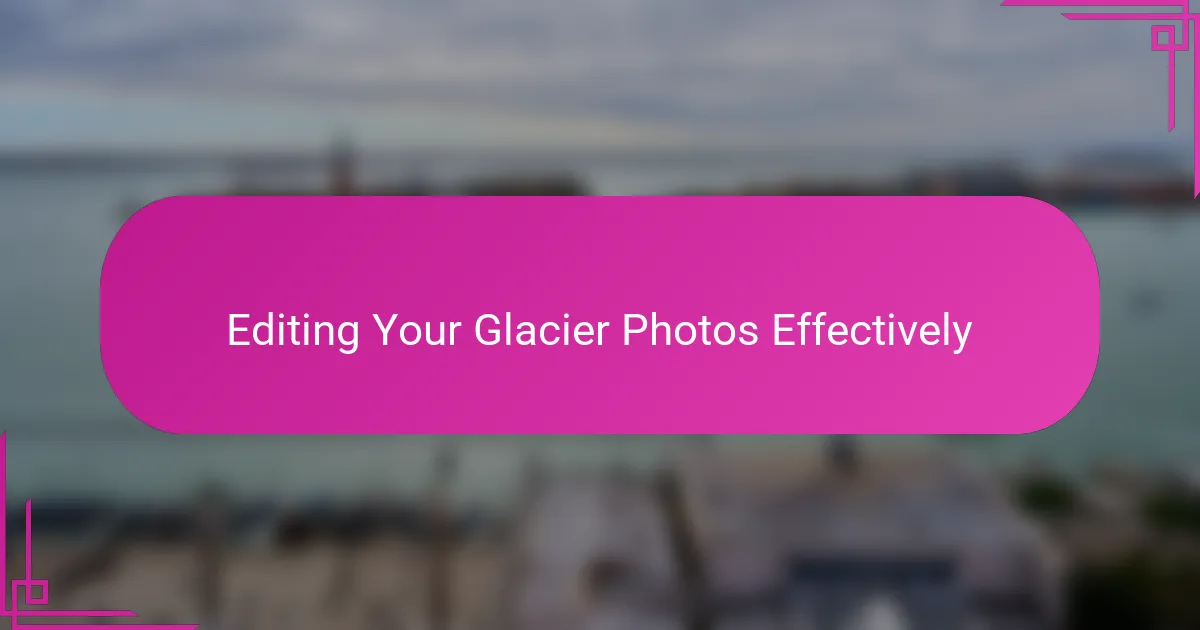
Editing Your Glacier Photos Effectively
Editing your Glacier photos effectively starts with respecting the natural light and colors that make the park so breathtaking. I often find myself gently boosting the blues of the lakes and the whites of the glaciers without overdoing it—too much saturation can make these serene scenes feel artificial. Have you ever wrestled with balancing color to keep your images true to what you actually experienced?
One trick I’ve learned is to carefully adjust the contrast and clarity to bring out texture in the ice and rock formations. It’s in those details where Glacier’s ruggedness truly shines, and subtle tweaks can elevate a great shot to something unforgettable. Do you play around with sharpening tools to highlight intricate patterns in your nature photos?
Finally, I always keep my edits mindful of the story I want to tell. Sometimes that means softening shadows to preserve mood, other times it’s about enhancing highlights to capture that crisp morning light. Editing isn’t just about fixing images—it’s about deepening the connection between you, the viewer, and the timeless beauty of Glacier National Park. How do you decide when a photo is ready to share?